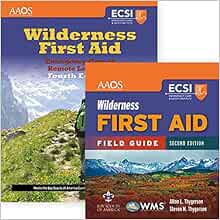Navigating the Wilderness: GPS Tracking Challenges in Rural and Remote Areas

GPS tracking, a cornerstone of modern logistics and asset management, faces unique hurdles when venturing beyond the well-trodden paths of urban landscapes. While seamless tracking in cities is often taken for granted, rural and remote areas present a different story altogether. Sparse infrastructure, challenging terrain, and unpredictable weather conditions all conspire to make reliable GPS tracking a considerable challenge. This article delves into the specific difficulties encountered in these locations, offering insights and potential solutions for those who need to track assets and vehicles in such environments.
The Signal Struggle: Weak or Absent GPS Signals
The most significant hurdle is, unsurprisingly, the signal itself. Dense tree cover, towering mountains, and deep canyons can significantly obstruct GPS signals, leading to intermittent tracking or complete signal loss. Tall buildings, a common urban issue, aren’t the only culprits. In rural settings, even rolling hills can create enough interference to impact signal strength. This means that vehicles or assets may temporarily disappear from the tracking system, causing significant anxiety and operational disruption.
The problem is compounded by the often vast distances between cell towers, which act as crucial relay points for GPS data. In remote areas, the absence of strong cellular coverage means that even if the GPS device manages to acquire a signal, transmitting that data back to the monitoring system can be incredibly difficult.
Infrastructure Deficiencies: The Rural Connectivity Gap
Beyond the signal itself, the underlying infrastructure plays a crucial role in reliable GPS tracking. The lack of robust internet connectivity in many rural and remote regions creates a significant bottleneck. Even if a GPS device collects data successfully, without a stable connection to upload that data, the tracking system remains incomplete and unreliable. This lack of infrastructure often translates into delayed or failed updates, leaving users with an incomplete picture of their assets’ locations.
Environmental Extremes: Weather’s Impact on GPS

Extreme weather conditions further complicate matters. Heavy rainfall, snowstorms, and even dense fog can significantly degrade or completely block GPS signals. This is especially problematic for industries like agriculture and construction, where operations continue even in harsh weather. The reliability of the tracking system is critical during such times, yet the most unpredictable conditions pose the biggest challenge.
Overcoming the Obstacles: Solutions for Reliable Tracking

Despite these challenges, reliable GPS tracking in rural and remote areas is achievable with careful consideration and the adoption of suitable strategies and technologies. Here are some solutions to overcome these hurdles:
- Enhanced GPS Receivers: Investing in GPS receivers with high sensitivity and advanced signal processing capabilities is crucial. These receivers are designed to acquire and maintain a signal even in challenging environments, minimizing the impact of signal interference.
- Multiple Communication Methods: Relying solely on cellular data is risky in rural areas. Systems that incorporate multiple communication methods, such as satellite communication (Iridium or Inmarsat) alongside cellular data, provide redundancy and ensure greater reliability even with weak or absent cellular signals.
- Data Buffering and Offline Functionality: Implementing data buffering allows GPS devices to store location data locally even during signal outages. Once a connection is re-established, the buffered data can be uploaded, ensuring that no location information is permanently lost.
- Improved Network Infrastructure: While not directly controllable by individual users, advocating for and supporting initiatives to improve network infrastructure in underserved rural areas is essential for the long-term solution to these challenges.
- Predictive Analytics and Route Optimization: Leveraging advanced analytics to predict potential signal loss based on known terrain and weather patterns can help anticipate and mitigate interruptions in tracking.
Choosing the Right GPS Tracking System: Considerations for Rural Use
Selecting the right GPS tracking system is paramount. Features to look for include:
- Robust hardware design: The device needs to be durable enough to withstand harsh weather and challenging terrain.
- Multiple communication options: As mentioned, having cellular and satellite backup is vital.
- User-friendly interface: Easy-to-use software and clear reporting are crucial for effective monitoring.
- Strong customer support: Technical assistance is invaluable when dealing with complex tracking issues in remote locations.
Conclusion: Embracing the Rural Challenge

GPS tracking in rural and remote regions presents unique challenges, but with the right technology and strategy, reliable tracking is attainable. By understanding the limitations imposed by weak signals, limited infrastructure, and unpredictable weather conditions, and by choosing appropriate solutions, businesses and individuals can overcome these obstacles and gain valuable insights into the location and status of their assets, regardless of where they are.
